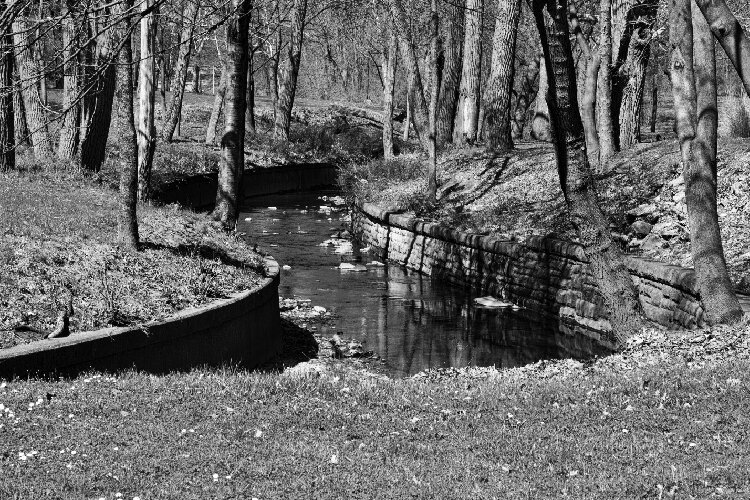Cleveland’s Cultural Gardens: A landscape of diversity, looking toward the future
This is the final installment in a four-part series about Cleveland’s Cultural Gardens, based on the book by John Grabowski and Lauren Pacini, “Cleveland’s Cultural Gardens: A Landscape of Diversity.”
Looking to the future, 10 additional gardens will be added in the Cleveland Cultural Gardens, including Native American, Pakistani, Korean, French, Egyptian, Scottish, Uzbek, Vietnamese, Mexican, and Colombian are in varying stages of planning and development.
 Central to the Hebrew Garden (1926) is this fountain by Georgia Eweh bearing the inscription, “Wisdom hath built herself a house; she hath hewn her out of seven pillars.” Dedicated May 5, 1926.These 10 gardens will bring the count of Cultural Gardens to 43. Undoubtedly, many more will follow.
Central to the Hebrew Garden (1926) is this fountain by Georgia Eweh bearing the inscription, “Wisdom hath built herself a house; she hath hewn her out of seven pillars.” Dedicated May 5, 1926.These 10 gardens will bring the count of Cultural Gardens to 43. Undoubtedly, many more will follow.
For the past 116 years the Cleveland Cultural Gardens have been a work in progress. New gardens are being planned and installed while existing gardens are being expanded. The walkway in the Vietnamese garden is waiting for the next steps of the installation. Expansion of the Syrian Garden will soon be completed while construction of Phase II in the African American garden will soon begin.
The narrowing of Martin Luther King Jr. Boulevard has slowed traffic, allowing passers-by to appreciate the panoramic view as it unfolds, garden after garden. Walkers, joggers, and cyclists are a frequent presence throughout the gardens.
The addition of the Centennial Peace Plaza provides a centralized space for performances and presentations enabling the Cleveland Cultural Gardens to offer diverse, multicultural music and dance and other educational and cultural programming on a regular basis.
The Cleveland Cultural Gardens Federation held the first One World Day in 1946. This year, Cleveland will host the 76th Annual One World Day celebration on Sunday, Aug. 28, featuring the annual swearing-in of new American citizens, and the Parade of Nations. An estimated 30,000 people will enjoy ethnic food and cultural entertainment.
In “Cleveland’s Cultural Gardens: A Landscape of Diversity,” Cleveland historian John Grabowski writes, “What holds the gardens together, what allows them to be seen as a unit, and what also awakens the visitor to the issues that have divided nations and people is the Doan Brook valley. Certainly, it is now a human-made landscape, and the stream, often bordered by stone walls, is no longer free to carve its own path. But both the stream and the valley make for a narrow, long, linear setting of national cultural juxtapositions that is astounding and deeply provocative.
 Confucius is central to Chinese culture and to the Chinese Garden.“While almost all the small postglacial streams in northeast Ohio have been largely hidden in culverts and forgotten, this piece of the region’s natural history has survived and in doing so has become a home to the stories (all much younger than itself) of the multitude of human cultures that have come to make up the city and the nation. Absent the brook and the valley, that story, in all its complexity, could not have been told as well as it has—and as it will continue to be in the future by the Cleveland Cultural Gardens.”
Confucius is central to Chinese culture and to the Chinese Garden.“While almost all the small postglacial streams in northeast Ohio have been largely hidden in culverts and forgotten, this piece of the region’s natural history has survived and in doing so has become a home to the stories (all much younger than itself) of the multitude of human cultures that have come to make up the city and the nation. Absent the brook and the valley, that story, in all its complexity, could not have been told as well as it has—and as it will continue to be in the future by the Cleveland Cultural Gardens.”
The first three installments of this series can be found here:
Cleveland’s Cultural Gardens: A landscape of diversity, the early years
Cleveland’s Cultural Gardens: A landscape of diversity, the middle years
Cleveland’s Cultural Gardens: A Landscape of Diversity, the later years
Published by Kent State University Press, “Cleveland’s Cultural Gardens: A Landscape of Diversity,” which combines words and images, will be available at the 76th annual One World Day at the Cleveland Cultural Gardens on Sunday, Aug. 28.
For additional details on the book, click here
.





